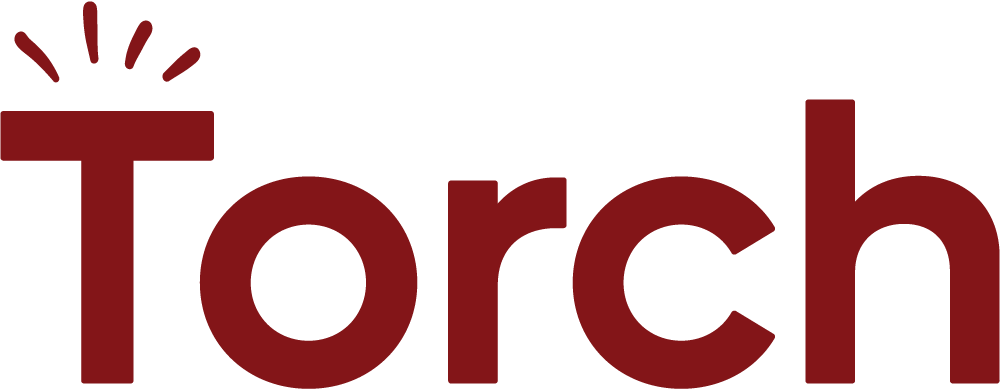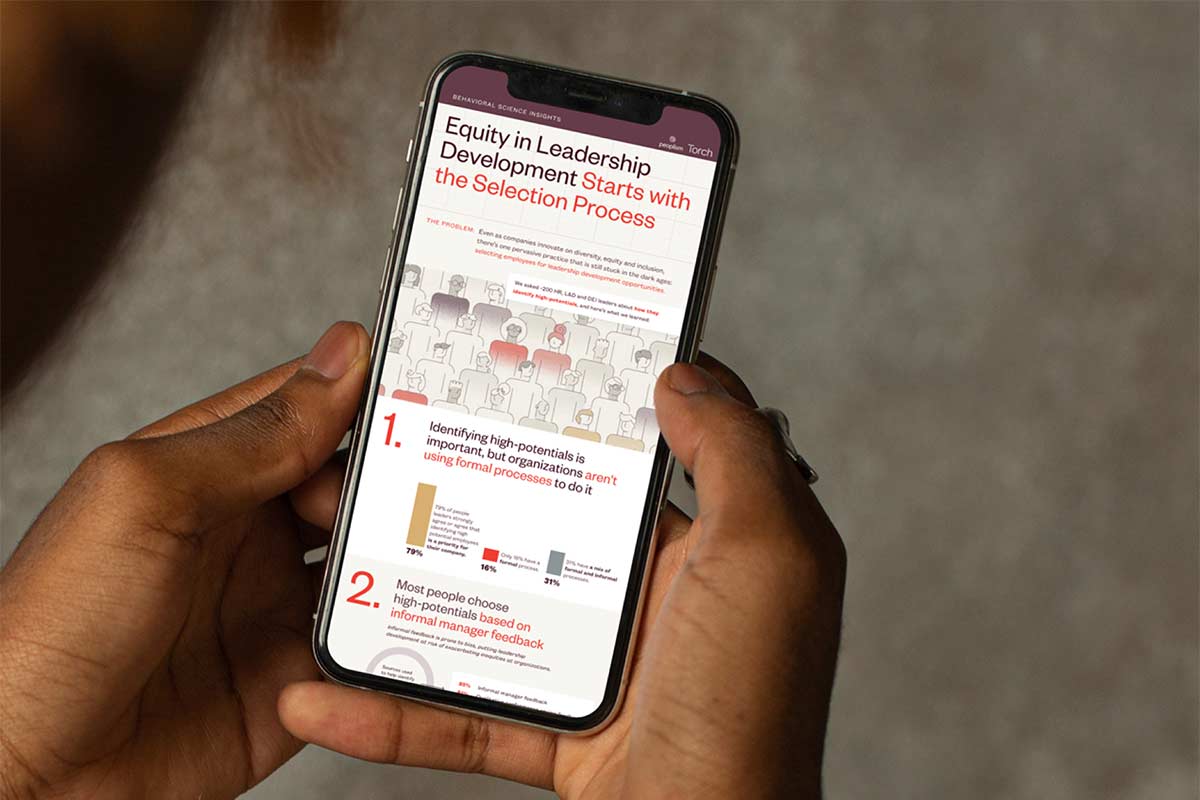Torch’s Head of Behavioral Science Insights, Elizabeth Weingarten, and Peoplism’s Liz Kofman-Burns, Ph.D., teamed up to research the perceived decline in high-potential employee development programs. As part of their research, they surveyed over 200 HR, DEI, and L+D leaders and uncovered compelling insights around how employees are selected for these types of programs. The main take away from the research is that equity in leadership development starts with the selection process.
An infographic detailing their research is below; it covers statistics around retention, engagement, and business performance as it relates to high-potential employee program selection. It also provides recommendations for what you and your organization can do to update policies, adjust processes, and formalize plans to offer accessible and inclusive leadership development programs.
And, for additional context into into their research, you can read this article Elizabeth Weingarten and Liz Kofman-Burns authored for Fortune.com here.

The problem: Even as companies innovate on diversity, equity and inclusion, there’s one pervasive practice that is still stuck in the dark ages: selecting employees for leadership development opportunities. We asked ~200 HR, L&D and DEI leaders about how they identify high-potentials, and here’s what we learned:
- Identifying high-potentials is important, but organizations aren’t using formal processes to do it. 79% of People leaders strongly agree or agree that identifying high potential employees is a priority for their company. Only 16% have a formal process, and 31% have a mix of formal and informal processes.
- Most people choose high-potentials based on informal manager feedback. Informal feedback is prone to bias, putting leadership development at risk of exacerbating inequities at organizations. make their decisions based on informal manager feedback (85%). Additional sources used to help identify people, from most to least common, are: qualitative performance review feedback (81%), informal leadership feedback (80%), manager nomination (65%), quantitative performance review score (61%), informal peer feedback (54%), assessment against pre-selected criteria.
- Most people inside organizations aren’t aligned on what makes an employee a high potential. When asked who is aligned on a clear definition of what makes an employee a high potential at their company, respondents answered: 70% of respondents feel that they personally knew the definition, 55% agree that their HR team does, 49% agree that senior leaders do, 40% agree that managers do, and only 25% agree that employees do. The understanding of high-potential decreases with power (creating a barrier for employees who may want to be selected as high-potential employees but don’t know the criteria).
- Most people leaders don’t feel confident in how high-potential employees are identified and admit that some employees are unfairly disadvantaged. A majority (54%) of respondents do not feel confident they are able to correctly identify high potential employees using their current process. And a majority (51%) believe that the way they currently select high potential employees at their organizations gives some people an unfair advantage.
What Your Organization Can Do
- Provide leadership development opportunities to all relevant employees. For example, make leadership coaching available to all managers and above. Give every employee a stretch assignment in their first year.
- Clearly define what leadership means at your organization. Establish clear, measurable criteria for how to evaluate employees on this definition. Criteria should be based on demonstrated performance (less potential for bias), not “potential” (which is highly biasing).
- Develop a clear process for selecting leaders. For example, when asking managers to select employees for succession planning or a leadership program, have managers rate each of their reports on 3-5 leadership factors and provide three pieces of evidence to justify their ratings. Train managers to avoid common evaluation biases.
- Communicate both the definition of leadership and the process for identifying leaders to all employees.
About Peoplism
Peoplism is a leading DEI consulting firm. By helping organizations adopt more fair processes and behaviors, Peoplism drives year-over-year increases in diversity, equity, inclusion and belonging. HR leaders at industry-defining organizations like ThredUp, Betterment, Grammarly and Everlaw trust Peoplism to create best-in-class company cultures that attract and retain top talent. www.peoplism.com
About Torch
Torch is the People Development Platform that fuels growth through the power of trusted relationships. By combining coaching, mentoring, and collaborative learning, Torch helps you design, manage, and measure programs that drive the success of your people—and your organization. Leading brands like American Express, Zendesk, Allstate, Twitch, FICO and Reddit use Torch to develop their people.

